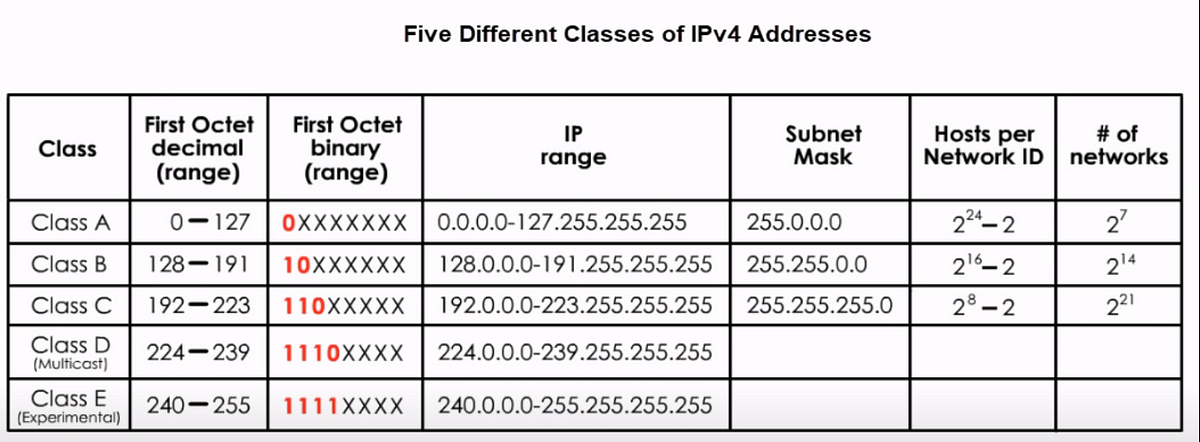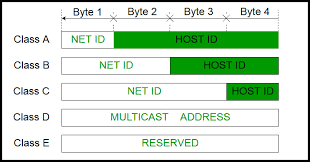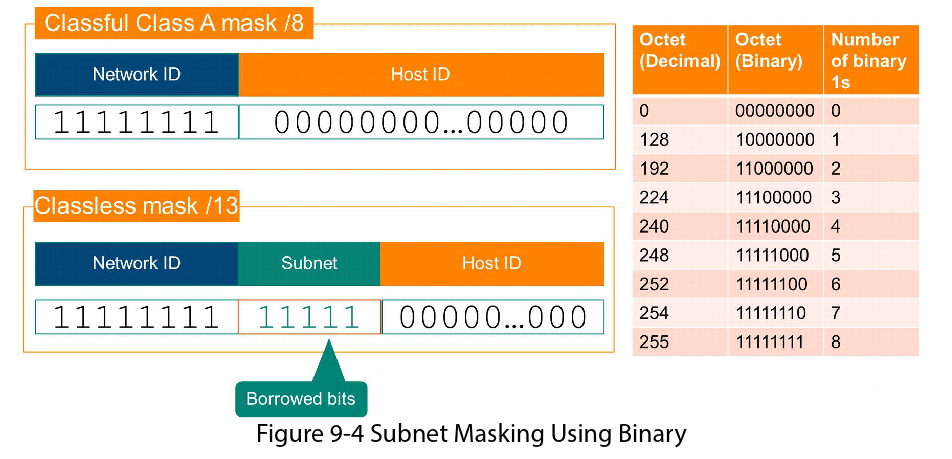Contents [hide]
Subnetting
IPv4 Address Classes
The IPv4 address space is divided into 5 classes (A to E) each of which is designed for a particular purpose.


- Class A: the first octet is between 0 and 127. The first octet (8 bits) is reserved for the network ID which means 3 octets (24 bits) are available for hosts on the network
- Class B: the first octet is between 128 and 191. The first two (16 bits) octets are reserved for the network ID which means the last 2 octets (16 bits) are available for hosts on the network
- Class C: the first octet is between 192 and 223. The first three (24 bits) octets are reserved for the network ID which means the last 1 octet (8 bits) are available for hosts on the network
IPv4 Address Classes
Reserved Addresses
In any network there are 2 reserved addresses that cannot be assigned to hosts:
- Network ID or Network Number: EG: 192.168.1.0
- Broadcast address. EG: 192.168.1.255
Calculating hosts in a network
The formula for this is 2^n where n is the host bits
EG:
Class A Network: 2^24 = 16,777,216, then minus 2 reserved addresses = 16,777,214
Private and Public IP Addressing
The IPv4 address scope is broken into Private and public addresses.

Classful Networks Disadvantages
The disadvantage with Classful networks is that you are locked into certain network sizes that may not suit your needs.

Subnetting
Subnetting fixes this issue by allowing you to break up a single classful network into smaller networks called subnetworks, or subnets for short. This allows you to create logical networks to fit your physical infrastructure needs.
Subnet Masking Using Binary

To accomplish subnetting you must use a custom network mask. The diagram above shows borrowing masked bits from the portion of this Host ID to create subnets. This mask is known as a subnet mask, and it is a classless mask.